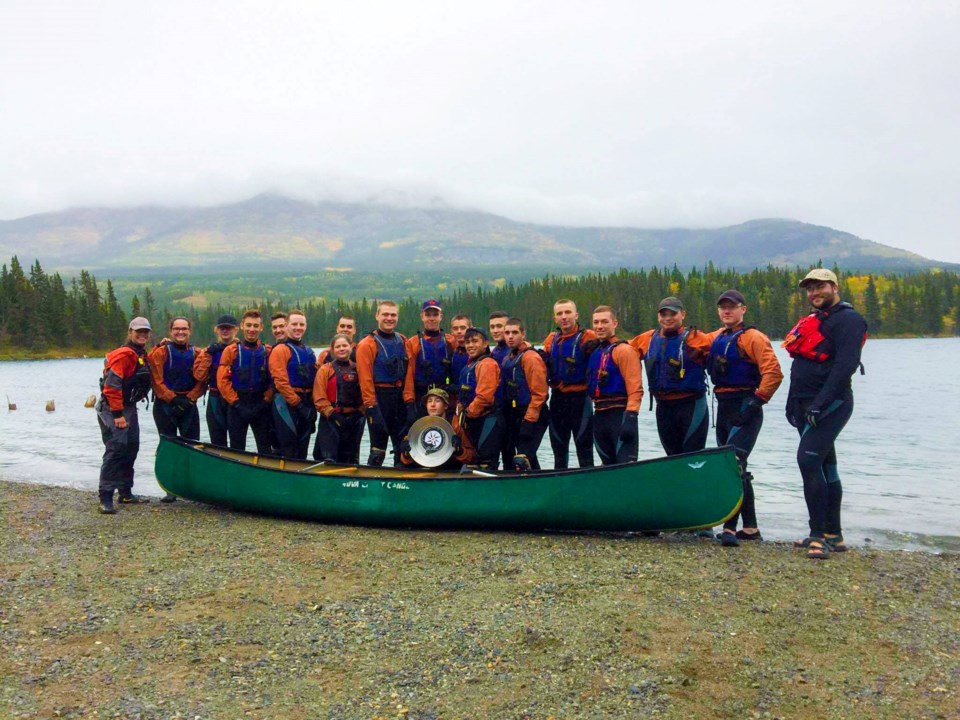By David Willberg,
[email protected]
Bailey Gaignard has had another memorable experience through the Royal Canadian Army Cadets program.
Earlier this year, Gaignard, an Estevan resident who is a member of the No. 2302 Weyburn Army Cadets, was selected to be part of the Maple Leaf Exchange. His most recent experience was a two-week army cadet national expedition in the Yukon Territory from Sept. 5 to 19. He was the only Saskatchewan army cadet selected.
“I paddled for five days on the Yukon River, and after that we transitioned to taking day trips in Tombstone National Park,” said Gaignard. “We summited one mountain there, it was the Gold Sides Mountain. Other than that, we hiked a few trails.”
A total of 18 cadets were part of the Yukon national expedition. Most were from Ontario. Gaignard left Regina on Sept. 5 and arrived at the Whitehorse Cadet Training Centre the following day. He remained at the centre until Sept. 8, when he and the other cadets travelled to the village of Carmacks for the night.
“We set up camp right beside the river, and on the morning of the 9th, we packed up our tents and all of our kit and we got on the river,” said Gaignard.
Over the next five days, they paddled to Dawson City, which was a distance of nearly 500 kilometres. “We camped on islands in the river, and off to the side of the river in a few designated places,” said Gaignard. “One day we stopped at Fort Selkirk, which was restored to what it was. And there was a campsite there as well.”
The average drifting speed was five to seven kilometres per hour (km/h), and their peak speed was about 10 km/h. They would travel 95 to 106 kilometres per day.
After a night in Dawson City, where they toured the historic community and picked up some supplies, they embarked on a hike on Sept. 14 at Tombstone National Park. They covered 13 kilometres the first day, most of it uphill. Gaignard was involved with the planning for that hike.
They summited a mountain the following day. “The bush was very thick to the top, until the last 20 per cent of the climb,” said Gaignard. “It was six-foot bushes the entire way. We had to bushwhack through that to get to the camp.”
The third day of the hike was supposed to take them to Grizzly Lake Trail, but there was a miscommunication with the bus company, and then the bus that was supposed to pick them up broke down. It forced them to change plans, so they went back up the Golden Sides Trail, because it was their last day of hiking. “We met up with the other group, took a really nice group picture in a valley with mountains on either side,” said Gaignard. Then the cadets returned to Whitehorse, where they went to a restaurant for a celebratory meal.
Gaignard earned the opportunity to have this experience after completing his silver and gold star expeditions, and participating in a regional expedition in Canmore, Alta., where he participated in several days of alpine skiing and ice climbing.
The national expedition was demanding, he said, and it was made even more difficult by the altitude change associated with travelling from Saskatchewan to the Yukon. “Everything was a lot more difficult than it should have been,” said Gaignard. “The canoeing wasn’t overall that difficult. The rapids were not intense. It was just very long and very tedious work, because we would get up early and leave camp early, and then we would arrive at camp very late.”
Gaignard admitted there was a sense of pride in being the only cadet from Saskatchewan. He also reconnected with some of his friends from previous cadet experiences




